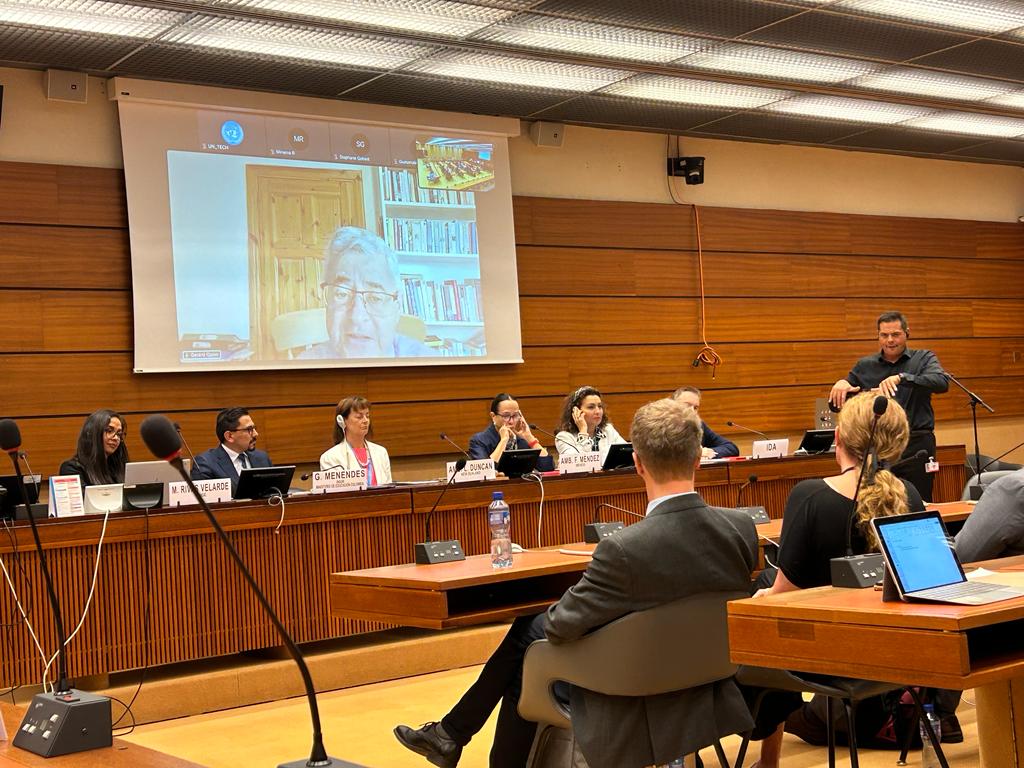Persons with disabilities remain largely invisible in the international norms and principles that protect civilians in armed conflict. This report focuses on participation across the peace continuum to reimagine traditional notions of protection.
Whatever their origin or nature, conflicts have massive and devastating implications for all civilians on their path. In recent years, international humanitarian law has evolved to make norms on civilian protection more sensitive to the situation, rights and needs of persons with disabilities, which constitute about 15% of the members in any community. This is laudable, but more work is needed to change the framing beyond protection in conflict, to reach the full continuum of laws and policies addressing the re‑establishment and maintenance of peace in post-conflict situations. Altogether, this is called the full peace continuum, and the main problem remains the invisibility of persons with disabilities in most norms and practices connected to it.
Rethinking protection from a rights-based perspective
The UN Convention on the rights of persons with disabilities broke away from traditional approaches in laws, policies and social practices, which saw people with disabilities as objects to be managed and cared for. Instead, the CRPD advanced the notion of personhood, which implies subjects with equal rights, entitled to participate in all decisions affecting their lives.
The CRPD’s rights-based vision has prompted a review of the concept of protection under international humanitarian law, paying attention to the difference of disability, and positively accommodating that difference. The international community took the first steps for this, through the very important UN Security Council resolution 2475, and the UN Strategy for Disability Inclusion, or UNDIS among others. These are important steps towards understanding protection as a necessary first step to secure the core people’s rights of personhood, equality, inclusion and participation.
Different levels of visibility across the peace continuum.
The experiences of persons with disabilities are gaining increasing visibility in international humanitarian action. The report details several cases of collective action, such as the UN Charter on Inclusion of Persons with Disabilities in Humanitarian Action in 2016, UNICEF’s 2018 guidelines for the inclusion of children with disabilities in humanitarian action, and UNHRC’s 2011 guidance on the needs of persons with disabilities in instances of forced displacement among others.
However, progress in all other phases of the peace continuum (prevention and conduct of conflict, international humanitarian and criminal law, or disarmament, demobilization and reintegration efforts) has been more limited. The varying degrees of invisibility in all these phases have a direct impact on the safety of people with disabilities in situations of armed conflict, in a global context in which these take place increasingly in urban contexts, where civilian populations are dramatically affected.
But as the study argue, invisibility not only impacts protection and wellbeing of particular groups. It also fails to seize the potential of organizations of persons with disabilities to play constructive roles in de-escalation and conflict prevention.
The notion of “protection” must be purged of its legacy of paternalism, grounding it instead on personhood and human agency...
The way forward
The study calls for reframing the notion of “protection”, to purge it of its legacy of paternalism, grounding it instead on the personhood, human agency and the right of persons with disabilities to participate in and help to reshape their own societies. This way, protection becomes more aligned with broader goals of inclusion and development. To do this, the Special Rapporteur makes the following recommendations, organized by the different phases of the peace continuum:
Conflict prevention: States should take into consideration the capacity of persons with disabilities and their organizations to provide a site of convergence for disparate groups to focus on what unites them despite their differences.
Conduct of hostilities: States and militaries need to assume that within any given theatre of military operations, persons with disabilities will comprise at least 15 per cent of the civilian population. This should be reflected accordingly in operation manuals and rules of engagement.
International criminal law: Greater attention must be paid to the disability dimension in existing and future investigations, commissions of inquiry and trials for war crimes and crimes against humanity.
Humanitarian action: Humanitarian action that takes due account of the situation of persons with disabilities is urgently needed. Steps are now being taken to make real the link between protection, humanitarian action and development. It is imperative that they are taken with the active participation and consultation of persons with disabilities and their representative organizations.
Disarmament, demobilization and reintegration: Disarmament, demobilization and reintegration programming must be disability inclusive. Ex-combatants with disabilities have an equal right to help to rebuild their own communities.
Peacekeeping: UN resolutions setting up or renewing peacekeeping missions should include language requiring them to integrate disability inclusion as a cross-cutting issue through their mandates.
Peace building: the constructive role of persons with disabilities in peacebuilding processes must be highlighted and seized.
Implementing these recommendations require research and investments in the capacities of militaries and organizations of persons with disabilities to engage with one another, and to increase their knowledge of international humanitarian laws, peace studies and protection frameworks.






